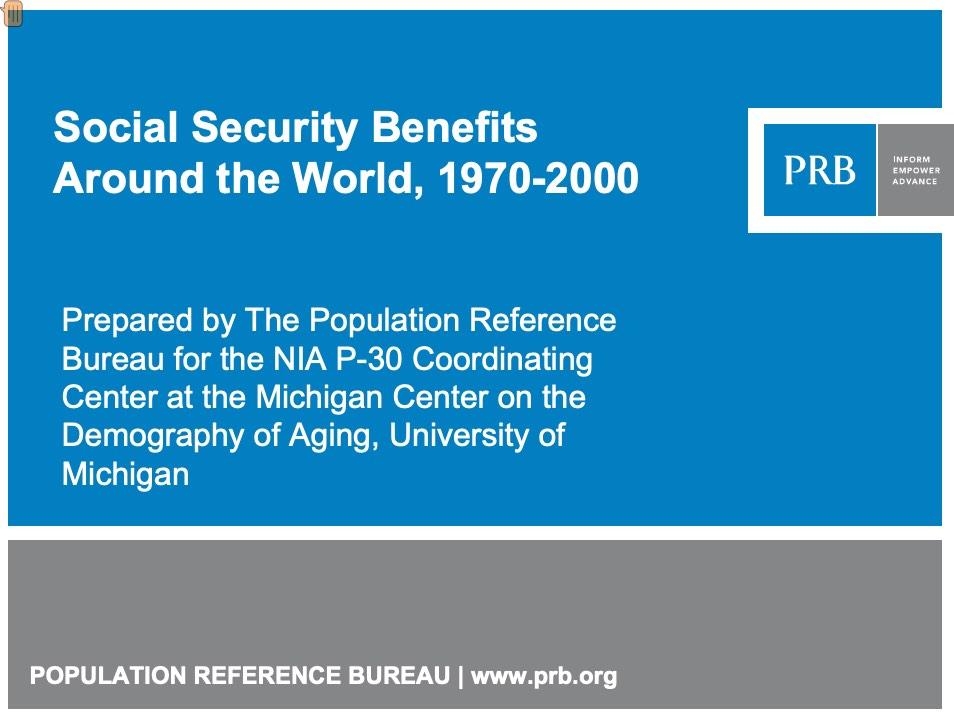
Social Security Benefits Around the World, 1970 to 2000
Date
December 1, 2010
Author
Focus Area
- Listen to the presentation (Time: 20 minutes)
Changes in social security systems affect economic growth as well as a host of decisions people make about saving and working. The Behavioral and Social Research Program at the National Institute on Aging supports 14 P30 Centers on the Demography of Aging at leading universities and policy organizations around the United States, many of whom conduct analyses of social security, retirement, and the relationship to health and other outcomes.
This PowerPoint presentation and narration is based on data generated from research conducted at one of the NIA-supported centers on the demography of aging. The slides illustrate data on replacement rates in 40 high-to-medium income countries from around the world from 1970 to 2000 and the variation in the extent to which social security income benefits substitute for earnings.
But social security replacement rates cannot capture the full range of benefits. For example, in the United States, some spouses benefits from their husbands’ social security even if the spouse never worked. Also, pension benefits from employers are not included in the calculation of social security replacement rates. That said, the presentation provides a general comparison of social security income benefits across countries.

 ">
">